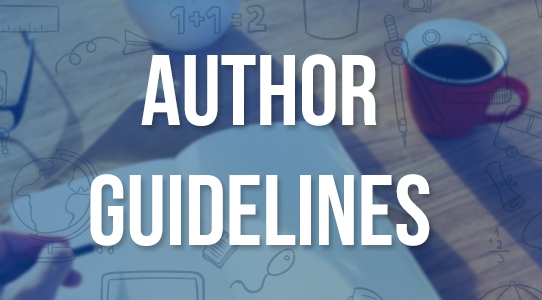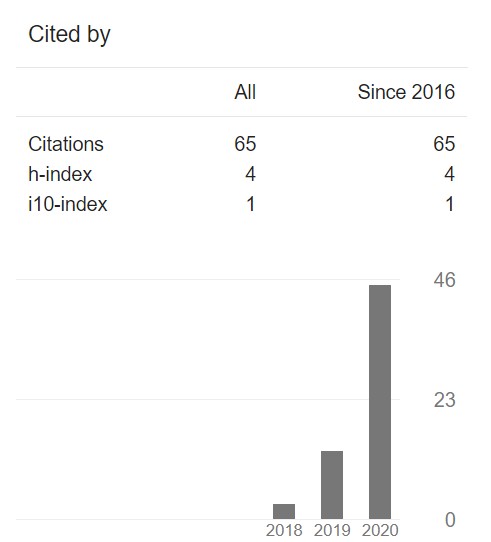Project-Based Learning Model in Learning to Write Explanation Text for Vocational High School
DOI:
https://doi.org/10.37680/qalamuna.v16i2.5601Keywords:
project-based learning model, write explanatory text, vocational high schoolAbstract
The purpose of this study is to describe and explain the ability to write explanatory texts of vocational school students, the implementation of the project-based learning (PjBL) model in improving the ability to write explanatory texts, and the strengths and weaknesses faced by teachers and students in implementing the project-based learning model. This research is crucial for enhancing the quality of writing instruction in vocational high schools. The research approach uses a qualitative descriptive approach. The subjects of this research were vocational high school students in Madiun. Data collection techniques were carried out through documentation, passive role observation, and) in-depth interviews. Data analysis was done using an interactive analysis model, carried out through 3 activity flows: data reduction, data presentation, and conclusion. This study revealed various problems in learning to write explanatory texts in vocational high schools. The results of the research show that: (1) students' ability to write explanatory texts is not by the structure of explanatory texts; (2) the direct impact of implementing the PjBL model is increasing students' ability to write explanatory texts; (3) the advantage of this model is that it provides experience for students that emphasizes practice in completing assignments and projects according to real-world conditions, while the disadvantages are that it requires the skills and activity of teachers and students, and quite time consuming especially in completing the project.
Downloads
References
Andyani, N., Saddhono, K., & Mujyanto, Y. (2016). Peningkatan kemampuan menulis teks eksplanasi dengan menggunakan media audiovisual pada siswa sekolah menengah pertama. BASASTRA Jurnal Penelitian Bahasa, Sastra Indonesia Dan Pengajarannya, 4(2), 161–174.
Bilgin, I., Karakuyu, Y., & Ay, Y. (2015). The effects of project-based learning on undergraduate students’ achievement and self-efficacy beliefs towards science teaching. Eurasia Journal of Mathematics, Science and Technology Education, 11(3), 469–477. https://doi.org/10.12973/eurasia.2014.1015a
Boaler, J. (1997). Experiencing school mathematics: Teaching styles, sex, and settings.Buckingham. Open University Press.
Cord. (2001). Contextual Learning Resource.
Crook, C., & Nixon, E. (2021). How Internet essay mill websites portray the student experience of higher education. Internet and Higher Education, 48(1), 1–24. https://doi.org/10.1016/j.iheduc.2020.100775
DePorter, B. (2000). Quantum Learning. Kaifa.
Donnelly, R., & Fitzmaurice, M. (2005). Collaborative Project–Based Learning and Problem–Based Learning in Higher Education: A Consideration of Learner-Focused Strategies. Emerging Issues in the Practice of University Learning and Teaching, 1, 87–98.
Fakhriyah, F., Masfuah, S., Roysa, M., Rusilowati, A., & Rahayu, E. S. (2017). Student’s science literacy in the aspect of content science? Jurnal Pendidikan IPA Indonesia, 6(1), 81–87. https://doi.org/10.15294/jpii.v6i1.7245
Friani, I. F., Sulaiman, & Mislinawati. (2017). Kendala Guru dalam Menerapkan Model Pembelajaran pada Pembelajaran Tematik berdasarkan Kurikulum 2013 di SD Negeri 2 Kota Banda Aceh. Jurnal Ilmiah Pendidikan Guru Sekolah Dasar FKIP Unsyiah, 2(1), 88–97.
Haliq, A. (2020). Keefektifan pembelajaran berbasis neuro linguistic programming dalam menulis argumentasi. LingTera, 7(2), 157–167. https://doi.org/10.21831/lt.v7i2.27529
Hill, A. A. (Ed). (1973). Linguistics. Voice of America Forum Lecturer.
Kellogg, R. T., & Raulerson, B. A. (2007). Improving the writing skills of college students. Psychonomic Bulletin and Review, 14(2), 237–242. https://doi.org/10.3758/BF03194058
Kemper, D., Nathan, R., & Sabraneck, P. (1995). Writer’s Express: A handbook for young writers, thinkers, and learners, Wilmington. Great Source Education Group.
Kosasih, E., & Kurniawan, E. (2018). Jenis-Jenis Teks. Fungsi, Struktur, dan Kaidah Kebahasaan. Yrama Widya.
Kovalyova, Y. Y., Soboleva, A. V., & Kerimkulov, A. T. (2016). Project-based learning teaches engineering students communication skills in English as a foreign language. International Journal of Emerging Technologies in Learning, 11(4), 153–156. https://doi.org/10.3991/ijet.v11i04.5416
Mahanal, S. (2009). Pengaruh Penerapan Perangkat Pembelajaran Deteksi Kualitas Sungai dengan Indikator Biologis Berbasis Proyek terhadap Hasil Belajar Siswa SMA di Kota Malang. Disertasi tidak diterbitkan. Program Pascasarjana Universitas Negeri Malang.
Mccarthy, T. (2010). Integrating project-based learning into a traditional skills-based curriculum to foster learner autonomy: An action research. The Journal of Kanda University of International Studies, 22, 221–244.
Mergendoller, J. R., Maxwell, N. L., & Bellisimo, Y. (2006). The Effectiveness of Problem-Based Instruction: A Comparative Study of Instructional Methods and Student Characteristics. Interdisciplinary Journal of Problem-Based Learning, 1(2), 11–17. https://doi.org/10.7771/1541-5015.1026
Miles, M. B., Huberman, A. M., & Saldana, J. (2014). Qualitative data analysis.
Mioduser, D., & Betzer, N. (2008). The contribution of project-based learning to high-achievers’ acquisition of technological knowledge and skills. International Journal of Technology and Design Education, 18(1), 59–77. https://doi.org/10.1007/s10798-006-9010-4
Penuel, W. R., Bates, L., Gallagher, L. P., Pasnik, S., Llorente, C., Townsend, E., Hupert, N., Domínguez, X., & VanderBorght, M. (2012). Supplementing literacy instruction with a media-rich intervention: Results of a randomized controlled trial. Early Childhood Research Quarterly, 27(1), 115–127. https://doi.org/10.1016/j.ecresq.2011.07.002
Poonpon, K. (2011). (2011). Enhancing English skills through project-based learning. T, 40(2), 1-10. The English Teacher, 40(2), 1–10.
Reynolds, K. (2019). “I Write to Frighten Myself”: Catherine Storr and the Development of Children’s Literature Studies in Britain. Children’s Literature in Education, 50(4), 449–463. https://doi.org/10.1007/s10583-017-9339-1
Sadeghi, H., Biniaz, M., & Soleimani, H. (2016). The Impact of Project-Based Language Learning on Iranian EFL Learners Comparison/Contrast Paragraph Writing Skills. International Journal of Asian Social Science, 6(9), 510–524. https://doi.org/10.18488/journal.1/2016.6.9/1.9.510.524
Sandelowski, M. (2000). ‘Focus on research methods. Whatever happened to qualitative description?’ Research in Nursing & Health, 23(2), 334–340.
Sutopo. (2006). Metodologi Penelitian Kualitatif. Universitas Sebelas Maret.
Tsiplakides, I., & Fragoulis, I. (2009). Project-based learning in teaching English as a foreign language in Greek primary schools: From theory to practice. English Language Teaching, 2(3), 113–119. https://doi.org/10.5539/elt.v2n3p113
Yusmaniar, Y., Sudrajat, R. T., & Mustika, I. (2022). The Effectiveness of Learning to Write Explanation through a Scientific Approach Using Project-Based Learning. International Research and Critics Institute (BIRCI-Journal), 5(1), 2717–2723.
Zajkov, O., & Mitrevski, B. (2012). Project-Based Learning: Dilemmas and Questions! Macedonian Physics Teacher, 48(June 2014), 1–11.
Downloads
Published
How to Cite
Issue
Section
License
Authors who submit manuscript retain its copyright and grant publisher right of first publication licensed under a Creative Commons Attribution-ShareAlike 4.0 International License (CC BY-SA 4.0) that allows others to access (search, read, download, and cite), share (copy and redistribute the material in any medium or format) and adapt (remix, transform, and build upon any material) the work for any lawful purpose, even commercially with an acknowledgement of the work's authorship and initial publication in Qalamuna: Jurnal Pendidikan, Sosial, dan Agama.












